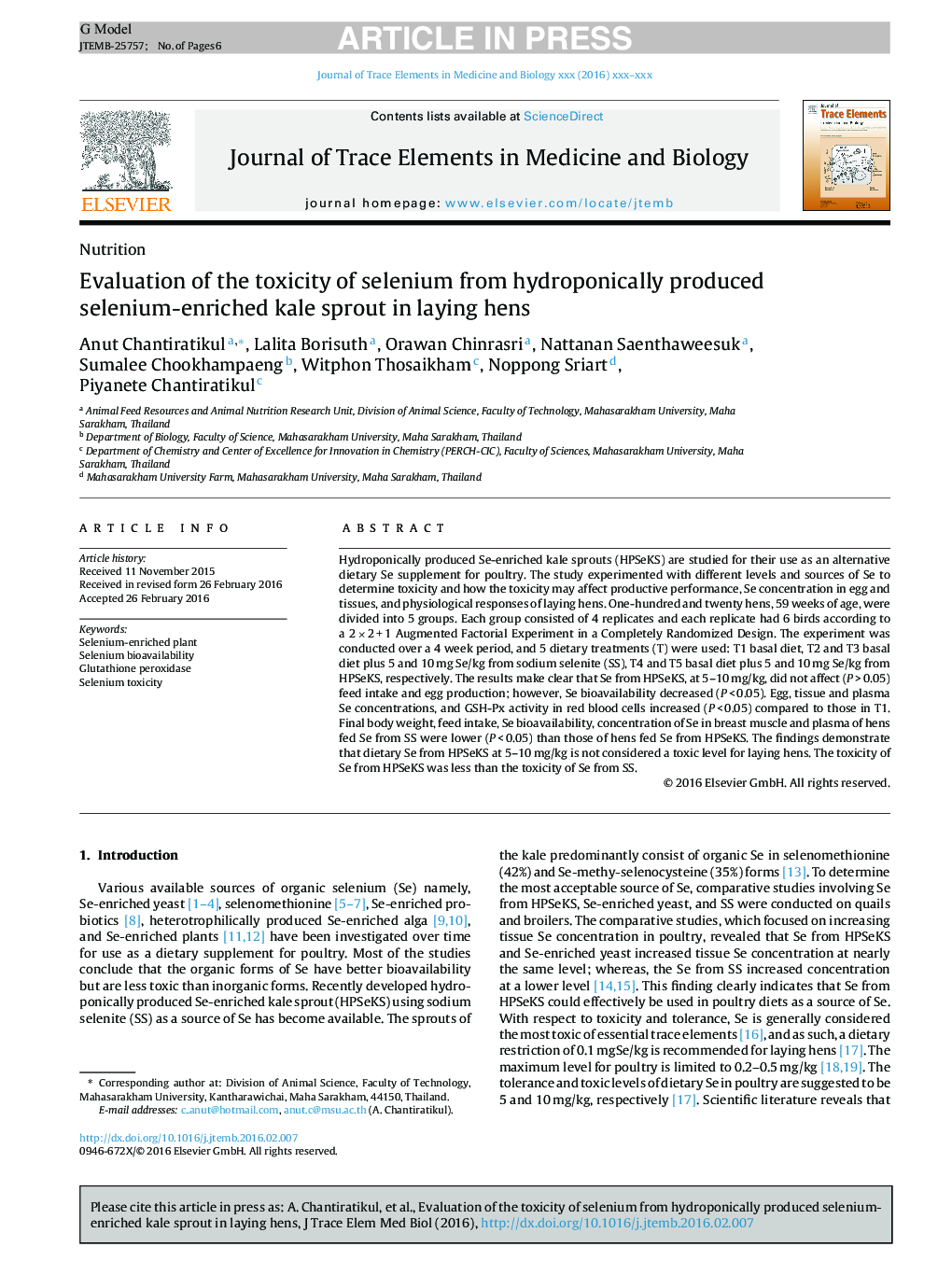| Article ID | Journal | Published Year | Pages | File Type |
|---|---|---|---|---|
| 7639368 | Journal of Trace Elements in Medicine and Biology | 2016 | 6 Pages |
Abstract
Hydroponically produced Se-enriched kale sprouts (HPSeKS) are studied for their use as an alternative dietary Se supplement for poultry. The study experimented with different levels and sources of Se to determine toxicity and how the toxicity may affect productive performance, Se concentration in egg and tissues, and physiological responses of laying hens. One-hundred and twenty hens, 59 weeks of age, were divided into 5 groups. Each group consisted of 4 replicates and each replicate had 6 birds according to a 2Â ÃÂ 2Â +Â 1 Augmented Factorial Experiment in a Completely Randomized Design. The experiment was conducted over a 4 week period, and 5 dietary treatments (T) were used: T1 basal diet, T2 and T3 basal diet plus 5 and 10Â mg Se/kg from sodium selenite (SS), T4 and T5 basal diet plus 5 and 10Â mg Se/kg from HPSeKS, respectively. The results make clear that Se from HPSeKS, at 5-10Â mg/kg, did not affect (PÂ >Â 0.05) feed intake and egg production; however, Se bioavailability decreased (PÂ <Â 0.05). Egg, tissue and plasma Se concentrations, and GSH-Px activity in red blood cells increased (PÂ <Â 0.05) compared to those in T1. Final body weight, feed intake, Se bioavailability, concentration of Se in breast muscle and plasma of hens fed Se from SS were lower (PÂ <Â 0.05) than those of hens fed Se from HPSeKS. The findings demonstrate that dietary Se from HPSeKS at 5-10Â mg/kg is not considered a toxic level for laying hens. The toxicity of Se from HPSeKS was less than the toxicity of Se from SS.
Related Topics
Physical Sciences and Engineering
Chemistry
Analytical Chemistry
Authors
Anut Chantiratikul, Lalita Borisuth, Orawan Chinrasri, Nattanan Saenthaweesuk, Sumalee Chookhampaeng, Witphon Thosaikham, Noppong Sriart, Piyanete Chantiratikul,
